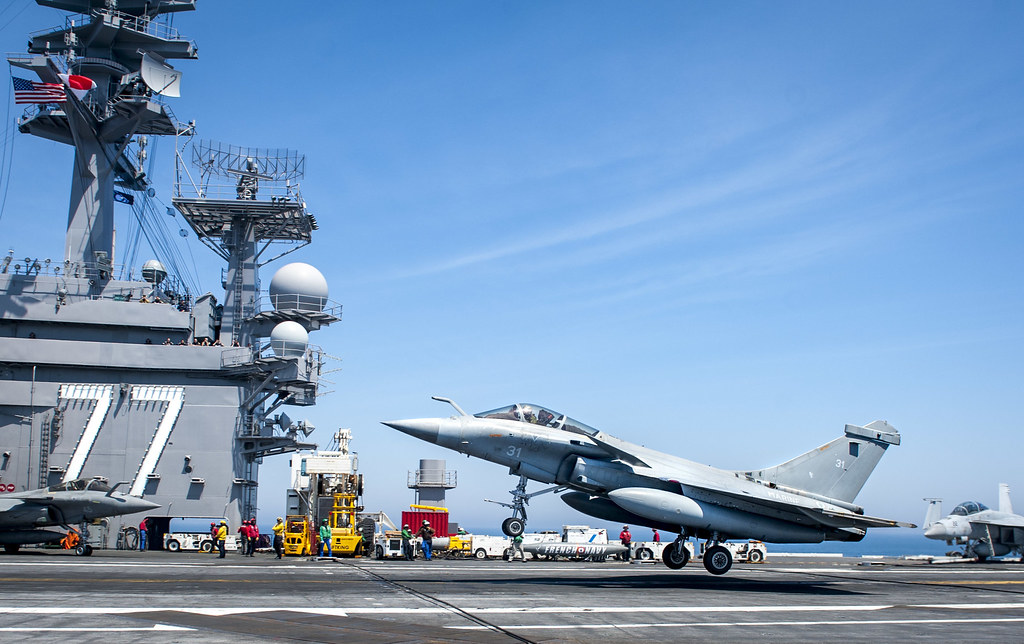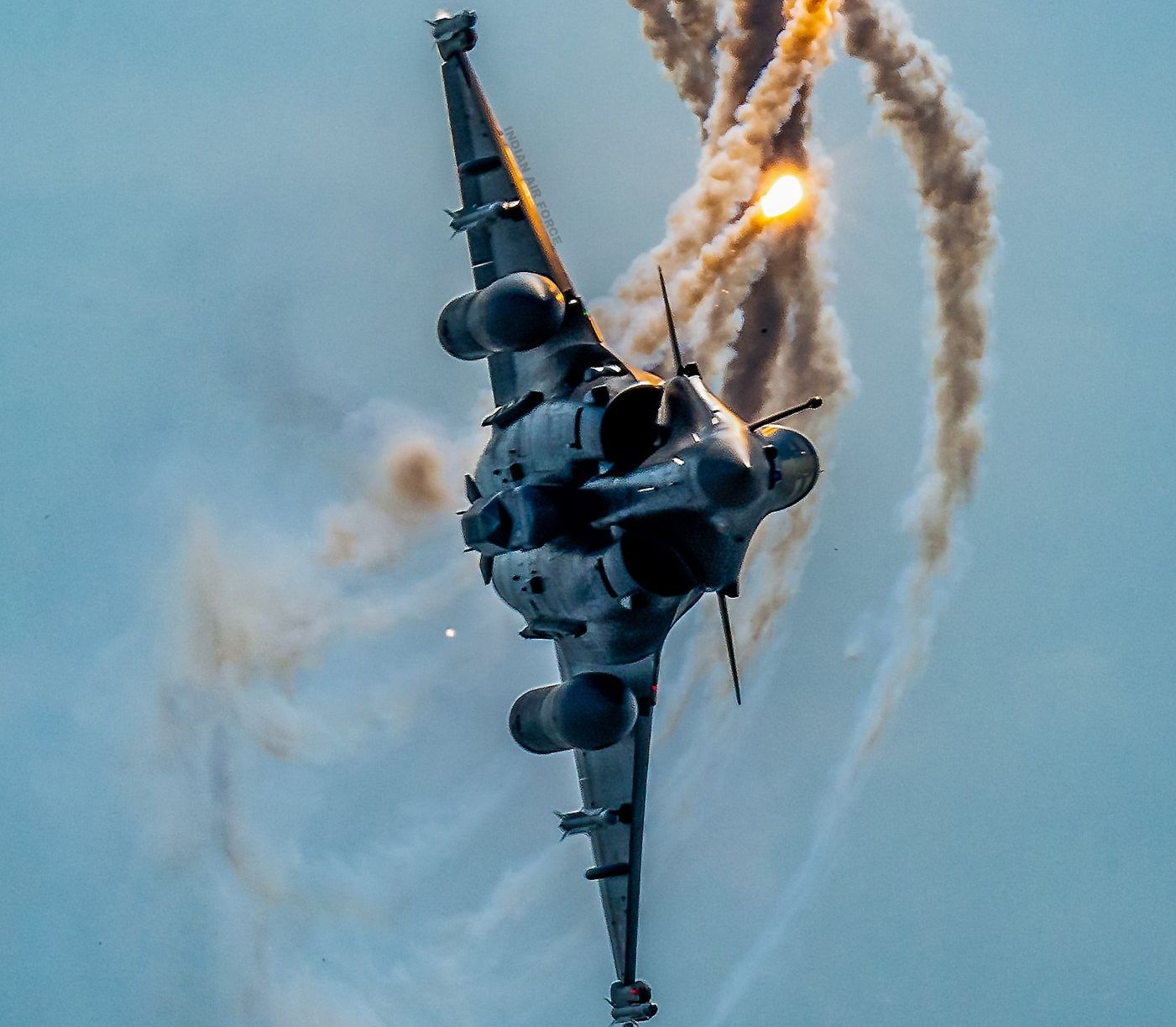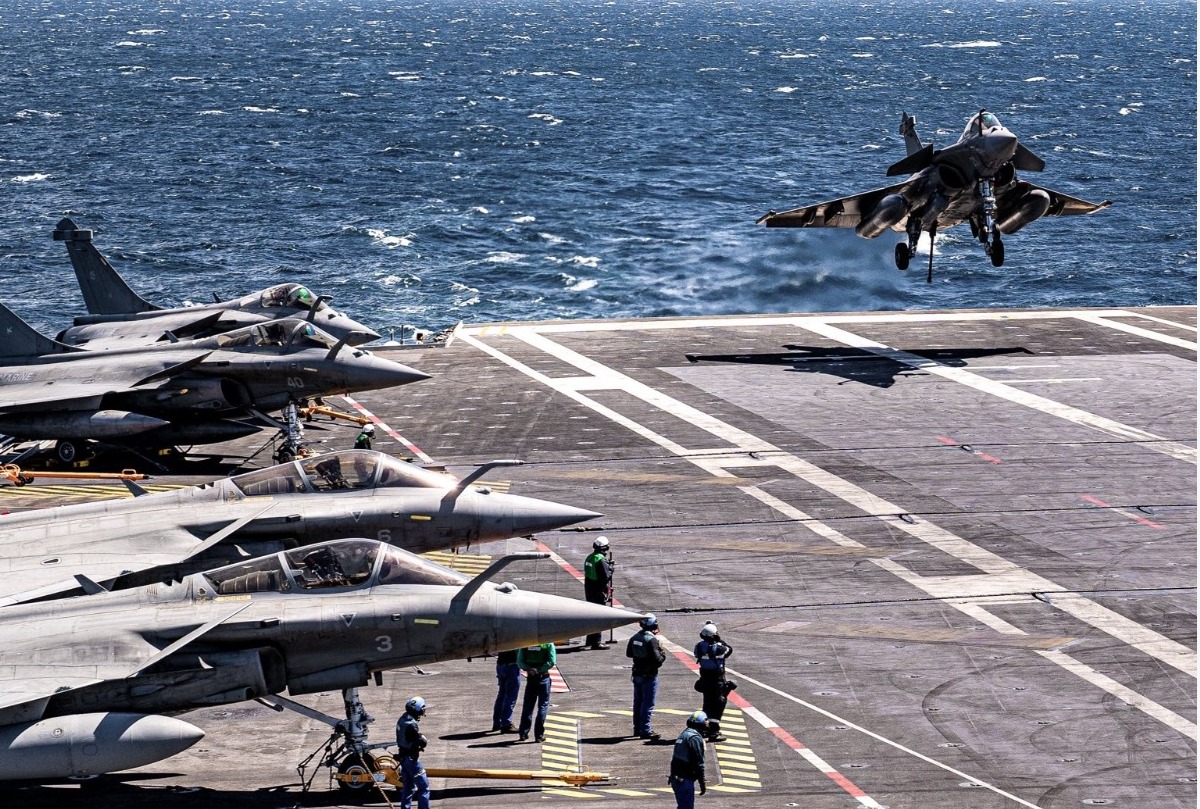The Indian elections will be over on June 1, and the results will be declared on June 4. The new Indian government will have a slew of decisions to take and deals to finalize.
The top on the list is the multi-billion deal for purchasing 26 Rafale Marine Fighter jets. According to media reports, a high-level French team comprising officials from their defense ministry, Dassault Aviation, and Thales will meet with Indian defense ministry officials, members of the Defense Acquisition Wing, and the officers of the Indian Navy to negotiate the contract for the carrier-based fighter jets.
The negotiations are expected to begin on May 30.
Dassault Aviation’s Rafale-M (Marine) edged out Boeing’s F/A-18 E/F Super Hornets based on interoperability with the Indian Air Force’s fleet. The existing fleet with its air force will help India strike a better deal for its Navy. The acquisition will happen through a government-to-government deal worth Euros 4 billion.
The deal finalization progressed at a slow pace as the Indian federal government entered election mode.
It is indicated that the Rafale will now take over as the Indian Navy’s frontline fighter jet from the Russian MiG-29Ks inducted into service in 2010. The Rafale M will operate from the aircraft carriers INS Vikrant and INS Vikramaditya.

India is keen to finalize the deal by the end of this financial year. In December 2023, France submitted its response to India’s tender for buying 26 Rafale Marine jets for the Indian Navy aircraft carriers. The Indian side studied the French commercial bid in great detail and will now begin negotiating better terms for the contract.
Going for Rafale M has been a political and strategic decision. The biggest disadvantage of the Rafale M for the Indian Navy is that it lacks a twin-seater variant.
“The IAF is already flying a twin-seater variant. So, for the naval aviators, the familiarization of the aircraft can happen with the air force. The naval pilots can undergo conversion on the IAF twin-seater Rafales,” a source told the EurAsian Times.
The French Navy also follows similar training routines for their pilots. Even now, the Indian Navy’s pilots initially train with the IAF.
“India can negotiate a better deal in terms of cost and maintenance logistics,” the officer added. India has had a wonderful experience in terms of the maintenance of French Mirages. The total requirement projected by the Indian Navy is 57 fighter jets. And a good initial deal may pave the way for more induction.
Then there is the question of armament. The Rafales for the IAF were expensive as they came with India-specific modifications and specific weapons that the force was keen on. The Indian Navy will be keen on its specifications.
NATO Member Wants India’s Help To Fight China As Estonia Gets Battered By Chinese Cyber, DoS Attacks
Tailoring Rafale For The Indian Navy
The Rafale Marine entered the French Navy’s service in 2002 and is at the F3 standard. Its first operational deployment was in 2010 in Libya. The Rafale Marine contributed to nearly 1,400 war missions and 4000 flight hours for the Air Group on board the aircraft carrier Charles de Gaulle.
Flying from an aircraft carrier greatly increases Rafale’s range of operations. It has demonstrated its endurance by undertaking long-duration missions (over two hours) in the past.
Another feature of Rafale M is that during the catapult, the airplane’s autopilot exercises full control of the machine, and the pilot gradually regains control from an altitude of around 100m. Twin engines provide an additional layer of safety to the aircraft, and the pilot can land in case an engine is lost.
The Indian Aircraft Carrier, including the indigenous INS Vikrant, uses the STOBAR (Short Take-Off but Arrested Recovery) method to launch and recover aircraft, which is equipped with a ski-jump launch aircraft and three ‘arrester wires’ for their recovery. “The change in the mode of take-off would require a modification in the software,” the naval aviator said.
When a ski-jump-launched aircraft is shifted to a catapult-launch aircraft carrier, its airframe also requires modification, but not vice versa. In terms of weapons, the fighter jets come with Laser-guided bombs, propelled bombs with GPS, SCALP-EG cruise missile, AM 39 anti-ship missile, and ASMP-A missile.
During combat missions in Afghanistan, the aircraft fired the AASM/HAMMER precision-guided modular air-to-surface armament, and PAVEWAY laser-guided bombs and the 30 mm cannon were employed on many occasions, scoring direct hits with remarkable precision.
In 2011, French Air and Space Force and French Navy Rafale fighters were the first fighters to operate over Benghazi and Tripoli. They carried out the whole spectrum of missions the Rafale was designed for air superiority, precision strikes with HAMMERS and laser-guided bombs, deep strikes with SCALP cruise missiles, Intelligence, Surveillance, Tactical Acquisition and Reconnaissance (ISTAR), and Strike Coordination and Reconnaissance (SCAR).

During the Libyan conflict, hundreds of targets – tanks, armored vehicles, artillery emplacements, storage dumps, command centers, and air defense systems (fixed and mobile SAM launchers) – were hit with controlled accuracy by Rafale aircrews.
Not Ony Rafale M
Rafale M is one of the main agenda points for the forces’ modernization for the new government. Recently, Defense Minister Rajnath Singh expressed the government’s willingness to give a nod to construct a second indigenous aircraft carrier.
However, the manufacturing lines have been sitting idle since INS Vikrant, the first indigenous aircraft carrier, became operational. The government has been dragging its feet on the issue. Even if the new government gives its nod for the second indigenous aircraft carrier, it will be ready just in time to replace the aging INS Vikramaditya, aka Admiral Gorshkov.
Exigency and financial prudence have guided the force’s decision to capitalize on the expertise gained in constructing the aircraft carrier.
“There is the case of losing the capability. Manufacturing an aircraft carrier is a niche technology, and we need to take advantage of it,” a retired Indian Navy official said, requesting anonymity. On various occasions, former Indian Navy chiefs, as reported by the EurAsian Times, have asked for bigger and nuclear-powered aircraft carriers.

The other agenda is the acquisition of Medium-Role Fighter Aircraft (MRFA) for the IAF and the arrest of the constantly dwindling number of fighter squadrons. In 2023, the number of surface-to-air missile (SAMs) units in the IAF surpassed the number of fighter jet squadrons in its fleet, although not by design.
The force’s dwindling fighter jet squadrons have been a concern. In 2023, a representative of the IAF told a Parliamentary Standing Committee on Defense that the force has 31 fighter jet squadrons against the sanctioned strength of 42.
The IAF’s proposal to acquire new fighter jets has been in flames for a long time. Despite waiting for years, the force has yet to receive an Acceptance of Necessity from the government.
“The multi-role fighter aircraft for the IAF has to be the top priority for the new government as the falling numbers of fighter squadrons need to be addressed urgently,” a retired IAF official told the EurAsian Times. Besides this, he says “theaterization and setting up of air-defense commands” are some of the major reforms that need to be executed as soon as possible.
- Ritu Sharma has been a journalist for over a decade, writing on defense, foreign affairs, and nuclear technology.
- The author can be reached at ritu.sharma (at) mail.com
- Follow EurAsian Times on Google News




